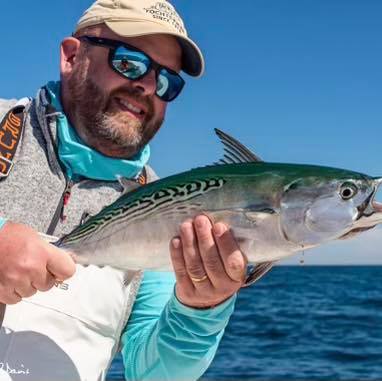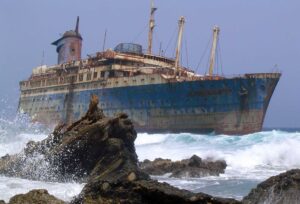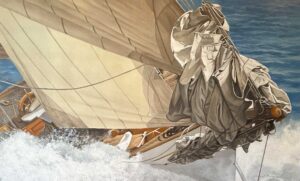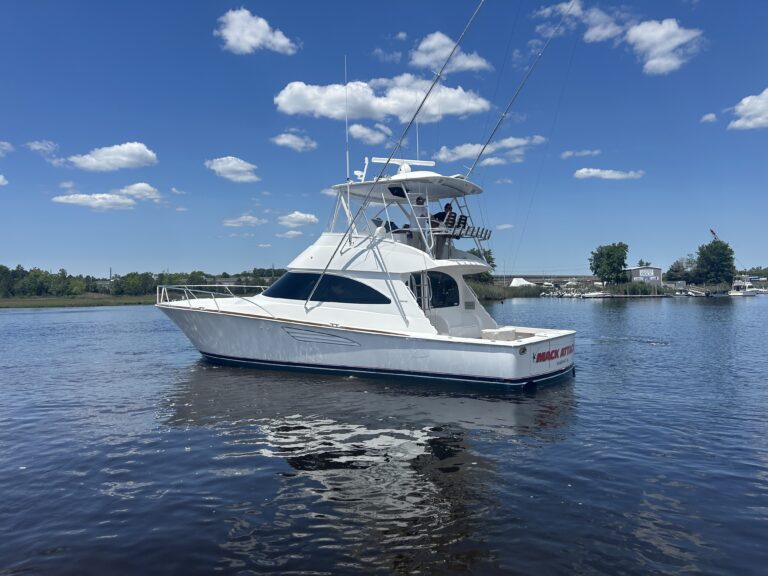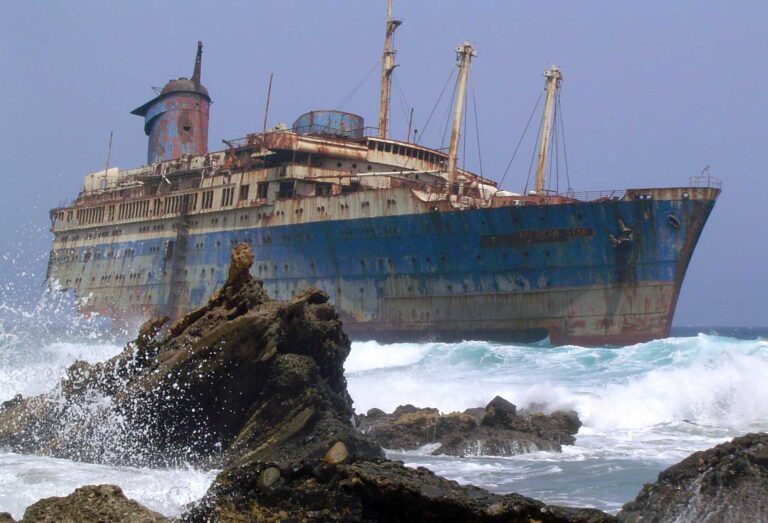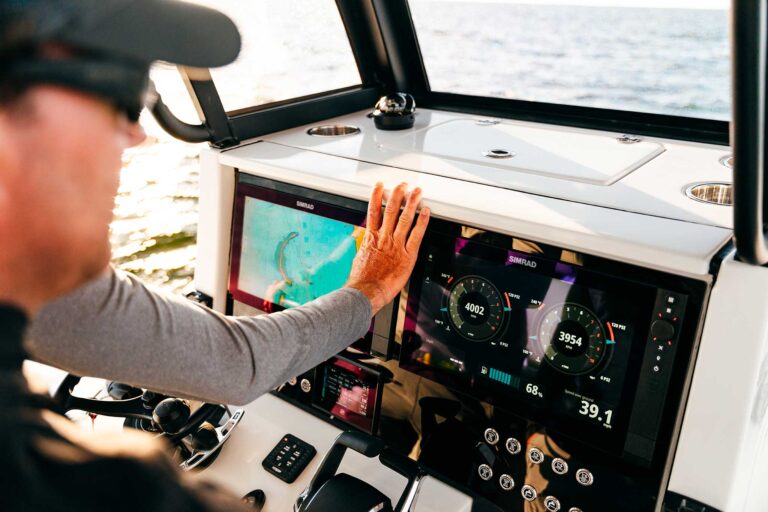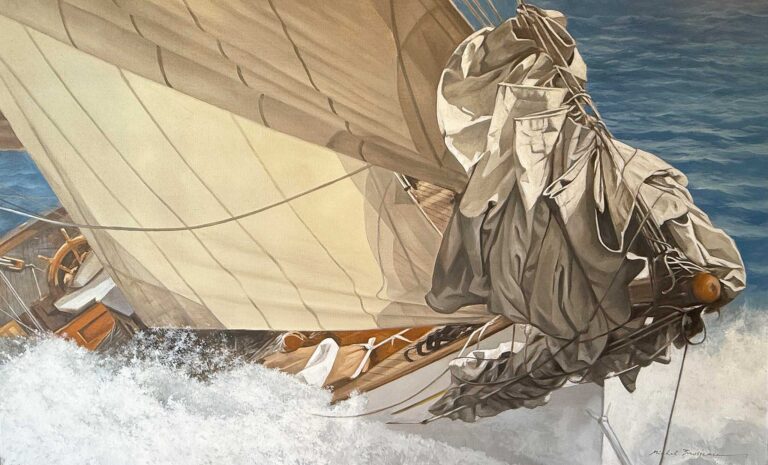My father’s relationships with most of the mechanical things in his life were abusive, but nothing compared with the suffering that two-stroke outboards inflicted on the poor guy. At least three-quarters of our crabbing or fishing trips began with him trying to coax one of the machines to life. It was common to see him turn himself into a pretzel on top of an outboards with a cigarette hanging off his lip, a wrench in one hand and a can of starting fluid in the other. In hindsight, it’s a miracle he didn’t blow us up.

But my father’s torture was my delight. I soaked every bit of his angst up, learning about small engines and how to troubleshoot problems. In my 20s, when I had outboards of my own, I became obsessed. Though aesthetic restoration wasn’t a primary goal for me, getting one to run just right was the ultimate pleasure. Later in life, in my early 40s, I discovered a community of outboard engine nerds just like me.
It was 2013 when I discovered a group of Antique Outboard Motor Club (AOMC) members displaying an arrangement of outboards dating to the early 1900s at the Chesapeake Bay Maritime Museum’s annual Antique and Classic Boat Festival. Each engine was beautifully restored and functioning as if it had just been freed from its original shipping box. Also on display were restored outboard stands, gas tanks and other collectibles. In chatting with the people at the meet, I learned that the club was formed in October 1965. By October of 1966, membership ballooned to more than 200 people. Today the club has 3,000 dedicated members on the rosters from more than a dozen countries.

One longtime member, of which there are many, is Gary Mower, a retired engineer and self-described outboard nut who has been with the club for 45 years. Today he lives in Cheshire, Connecticut, and is president of the AOMC Yankee Chapter. The chapter loosely encompasses the states of Connecticut, Massachusetts, New Hampshire, Vermont and Rhode Island, and has about 200 members.
Mower remembers being intrigued by boats and outboards at an early age. “My family had a cabin up in the Adirondacks that my uncle and grandfather built in the late ’50s,” he says. “They always had boats, and I can vividly remember playing around with a 12-foot DuraNautic aluminum boat with a 10-hp 1968 Evinrude outboard. I still have the boat and that engine.”
Later, in high school, he and a friend found a beat-up, 8-foot wooden pram, which they took home and fixed up. Once it was repaired, they set about finding a motor for it. “We found an old forgotten outboard in the basement of my high school, asked the principal about it, and he let us take it,” Mower explains. “It was a 3-hp 1928 Caille, which we fixed up and then put on the pram to take out fishing. That’s where it started. I became obsessed with Caille engines and then friends and relatives started giving me outboards to fix up.” He is still in possession of the nearly 100-year-old Caille engine.

Mower learned about AOMC from an ad in Popular Mechanics back in 1975 and has been a steadfast member ever since. “The club is made up of such a wide array of people with different talents and interests related to outboards,” he says. “Though the online presence with Facebook is nice, the wet [with boats in the water] and dry [on land] meets are where people connect. They show off their hard work and get information on just about everything from other members. It’s where friendships are made. We try to get together once a month.”
He says there is a wide variety of AOMC members. “Some simply like collecting the old machines and keeping a display of them in their garage or shed,” Mower says, “Others enjoy the challenge of getting an old outboard running but don’t go the complete restoration route. Then there are members who want not only to get the machine running again, but also to restore it, often to better-than-new condition.”

Another Yankee Chapter antique outboard sharpie is retired mechanical engineer Bill Andrulitis, who has been an AOMC member since 1971 and has 25 outboards in his collection. He grew up in West Hartford, Connecticut, among his parents and grandparents, but it was his grandfather who had the mechanical interests in the family. (His father was a geologist.)
“My first outboard was a 1947 7.5-hp Scott Atwater that my grandfather gave me when I was a little guy,” Andrulitis says. “He was always fixing up old lawnmowers and things like that. He thought it was important for me to have an engine to toy around with. We got it working and used it a few times down on the Connecticut River on rowboats you could rent for 25 cents. There was also a 1953 7.5-hp Evinrude Fleetwin that we fixed up and restored.”
But the outboard that kicked Andrulitis’ outboard passion into high gear was a 32-hp Johnson Sea-Horse that caught his eye at the Hartford Boat Show in 1970 when he was 19. “Off in the distance I saw an outboard on a stand with a Johnson Sea-Horse 32 logo on the back, just like my grandfather’s,” he says, “The owner of the engine, Bob Zipps, talked to me about it and became a mentor of sorts over the years. I’m still in touch with him today.”

There are different challenges when it comes to buying, collecting, repairing and restoring vintage outboards, according to Andrulitis, but he says most new hobbyists get along just fine. “The nice thing about the hobby is that acquiring most outboards is relatively inexpensive and the parts are not overly pricey,” he says. “And, of course, with the internet and social media, as well as our club meetups, getting help and having questions answered is usually easy, even if you’re just starting out and aren’t mechanically inclined.”
Andrulitis admits that sourcing some parts can be tricky and that folks who can improvise have an edge. “I have a small machine shop, and I often make parts for folks who cannot find them,” he says, “but folks who are a little crafty can often make their own gaskets, carb floats, seals and things like that. Some old automobile engine parts even work on these outboards.”
Collectors who want to fully restore outboards usually have the biggest challenges, says Andrulitis, as they’ve got to source aesthetic elements such as color-matched paint, logo decals and emblems, instruction plates and more. “The nice thing about the club is we’ve got all sorts of experts,” he says. “Some guys are good with specific outboard brands, others are sort of tuned into the electrical aspects of the outboards and some guys know how to source or make parts. It’s pretty difficult to get stumped with a problem if you’re active in the club.” But Andrulitis admits that some of the machines are unfixable. “Sometimes, nothing can be done,” he says.

It’s difficult not to fall in love with the unique styling and aesthetics of these old outboards, whether they’re 100 years old or 50. The looks of the engines often followed the industrial design languages of the times when they were built. Early engines often are exposed and open but have gorgeous, polished metal parts that make them look almost like tiny steam engines. Mercurys built in the late ’40s and early ’50s have an Art Deco look to them. Some of the 1960s-era engines resemble kitchen appliances of the day. And, like many industrial elements of the ’70s, plenty of outboards from that era aren’t exactly beauty queens. It’s the variety of looks and designs that appeal to many collectors, according to Andrulitis.
The way these old engines look is a draw for 63-year-old AOMC Yankee member Bob Toffey, who joined the club in 1977. “I’m not a great restorer, but I definitely enjoy the different design aspects of various motors,” he says. “I have a very eclectic collection of outboards. They’re not all shiny and repainted, but I love each one for different reasons.”

Inside and outside the cowls—or even in plain sight—are many interesting dials, knobs, switches and mechanical parts that emphasize the finicky nature of some of these old
machines. “Carburetors had jet adjustment knobs for fast and slow speeds, choke levers, you name it,” says 35-year AOMC Yankee member Walter Leniart. “You really can’t just pop the motor on, pull the cord and run it in many cases,” he adds. “That’s where having the club helps. If you don’t know the settings, someone will.”
Among all the outboards collected by members of the club, there are some many consider unicorns—rare and difficult to find models. “Chris-Craft outboards, Martin, Champion, Oliver, Scott Atwater and Gale Buccaneer are a handful of the rarer motors out there,” Leniart says. “These are mostly 1940 and 1950 motors. Earlier models are Elto, Caille, Lockwood, Neptune, Waterwitch and Koban. But one is making fortunes on these machines, especially the smaller outboards.”

Leniart says that the camaraderie of meeting like-minded collectors and outboard enthusiasts is a big benefit of being a member of the club. “We’re in touch all the time, and we help each other out. All of us gather [outboards] that are basically parts —beyond restoration or repair. But we pick them up because even if we don’t need them, somebody else will. We enjoy each other’s company and our motors and we have a good time. That’s what the club is all about, and we love it.”
This article was originally published in the July 2021 issue.















